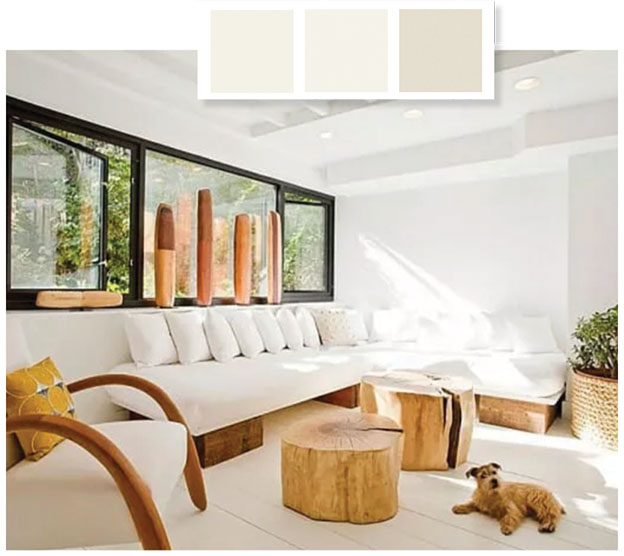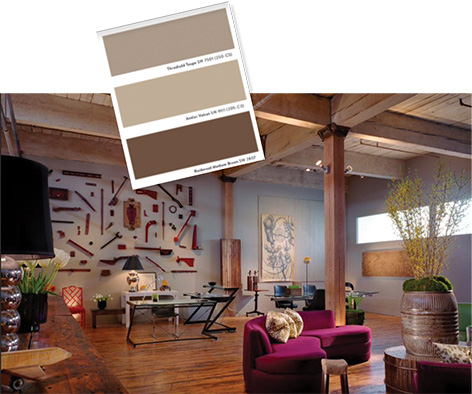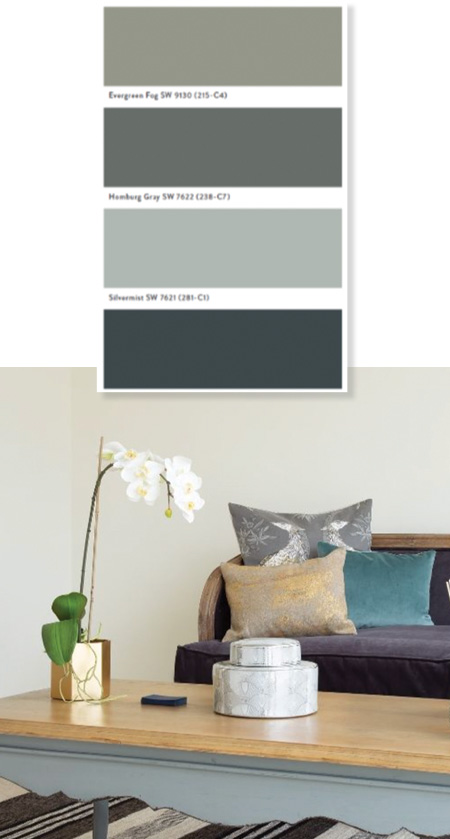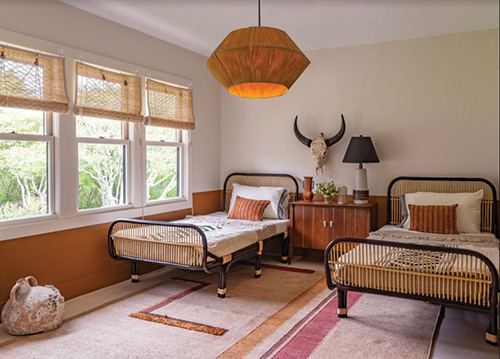As we look toward the future of interior design, it’s clear that the rest of 2023 will bring some exciting new trends and styles. From nature-inspired designs to maximalism and multifunctional spaces, there are many possibilities for how we will decorate our homes.
This year, we can expect a continued focus on designs that promote well-being, sustainability and functionality. This involves incorporating natural elements, creating spaces that serve multiple purposes and using durable, eco-friendly materials.
The world of interior design has much to offer. Let’s explore some of the top trends and styles we can expect to see for the remainder of the year:
COLORS
Exterior
Research shows that in 2023, off-white will be the most sought-after exterior color choice for homeowners who are considering improvements.
 Some of the selections include:
Some of the selections include:
- BM Simply White
- Behr Whisper White
- Clare Timeless
- Clare On Point
- Farrow and Ball Schoolhouse White
- Dunn Edwards Whisper
Remember, choosing the right exterior paint color is a big decision, and it’s important to consider factors like your home’s architectural style, the surrounding landscape and your personal preferences. It’s also a good idea to test samples before committing to a color to ensure that it looks great in different lighting conditions and at different times of day.
Interior
Warmer tones appear to be gaining popularity while cooler tones are trending less. Colors like beige, terracotta and warm gray can give a space a cozy, inviting feel. These colors work well with natural materials like wood and leather and can create a harmonious and inviting atmosphere.
Incorporating warmer colors can lend a room a more personal, welcoming vibe, especially areas where people gather and socialize like living rooms, kitchens and dining rooms. In addition, warmer colors can create a sense of intimacy and comfort, which is especially important in cold climates or during the fall and winter months.
Some shades to try include:
- Benjamin Moore – Raspberry Blush
- Sherwin Williams – Redend Point
- Behr – Blank canvas
NATURAL MATERIALS
Natural materials like wood, stone and leather bring a natural texture and richness that can add depth and character to a room. For instance, incorporating wooden furniture or stone accents can create a rustic or earthy vibe that is cozy and welcoming.
The Coast is known for its natural beauty and outdoor recreational opportunities. Incorporating natural materials in interior design is a nice nod to your surroundings and enhances the overall experience of living in or visiting the area. Using natural materials in homes, hotels and other public spaces can create a sense of harmony and connection with the natural environment, making it a great way to promote the local culture.
Furthermore, natural materials like wood, stone and leather are versatile and work well with a variety of design styles, from traditional to contemporary. They also can be used in numerous ways, such as creating accent walls, adding texture to furniture pieces or incorporating natural fibers into textiles.
EARTH TONES
With the recent focus on sustainability and eco-friendliness, we may see a rise in earth tones in 2023. These include colors like terracotta, olive green and burnt orange. These shades convey warmth and hospitality and pair well with natural materials like wood and stone.

MULTI-FUNCTIONAL SPACES
With the rise of remote work and flexible working arrangements, many people are spending more time at home than ever before. This has led to a trend toward multi-functional spaces, where one room serves multiple purposes. For example, a living room also may serve as a home office or a guest room.
To create multi-functional spaces, it’s important to think about furniture that can be easily moved around and repurposed to suit different needs. This can include items like a sofa bed or a desk that can be folded away when not in use. Modular furniture, such as shelves or storage units, are another great way to create versatility.
Multi-functional spaces are especially important in smaller homes or apartments, where every inch of space counts. However, they can be beneficial in any home, as they allow for greater flexibility and adaptability to changing needs.
 SUSTAINABLE DESIGN
SUSTAINABLE DESIGN
Sustainable design is an approach that aims to minimize the environmental impact of building and decorating spaces. This trend has gained momentum in recent years as people become more aware of the impact of their choices on the planet.
Using eco-friendly materials like bamboo, reclaimed wood or recycled glass is one way to incorporate sustainability into interior design. These materials often are manufactured in a manner that minimizes the use of hazardous chemicals and reduces waste.
Another option is to use upcycled or repurposed products, such as vintage or secondhand furniture. This not only reduces waste but adds personality and character. Items such as old doors, windows or shutters also can be repurposed to give rooms a unique touch.
Sustainable design is an important trend in interior design because it helps reduce our environmental impact while creating beautiful, functional spaces.
MIXED TEXTURES
Mixing textures is a great way to add depth, dimension and visual interest to your space. By incorporating different textures like velvet, leather and wool, you can create a room that feels cozy, layered and inviting.
Here are some tips:
- To avoid overpowering your room with textures, start with a neutral color palette. This lets you mix textures without looking chaotic.
- Choose one texture to dominate your space. Velvet can be used on sofas or accent pillows.
- Layer complementary textures: After choosing your dominant texture, add leather and wool — perhaps a leather accent chair or wool throw blanket.
- Don’t be afraid to mix textures. You may have a velvet sofa, leather accent chairs and wool pillows.
- Use texture to create contrast: For instance, a velvet sofa can contrast with rough jute carpeting.



